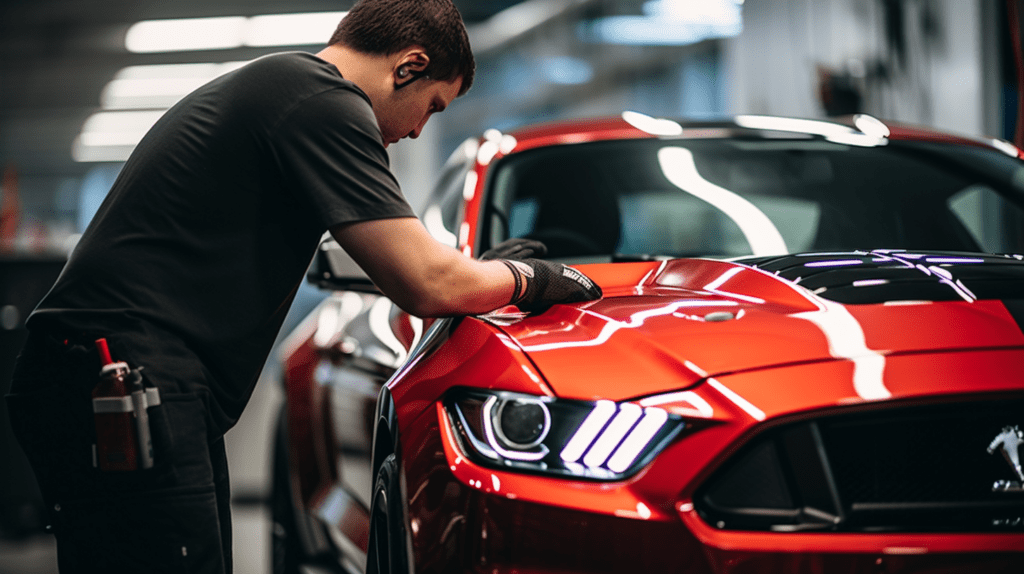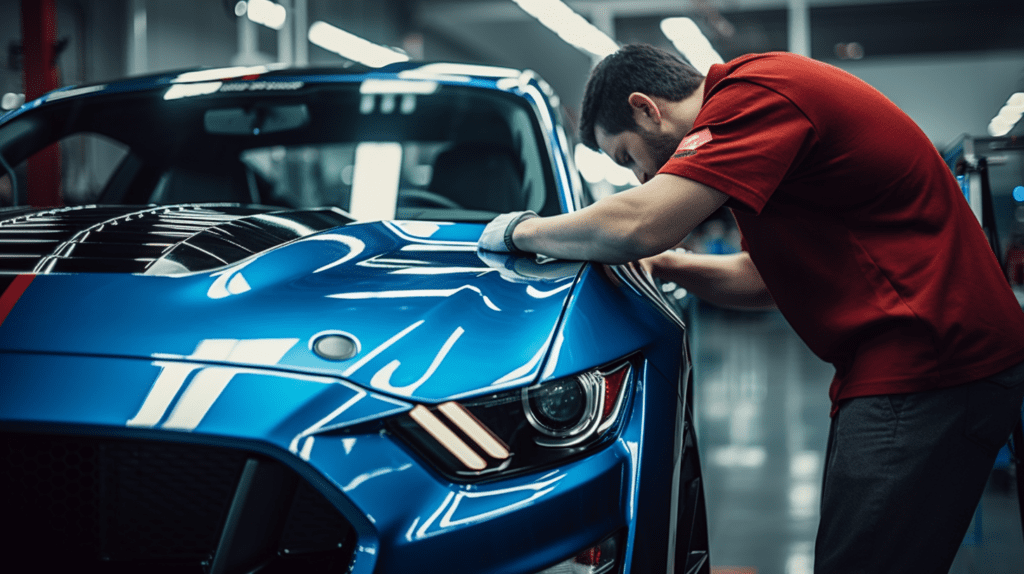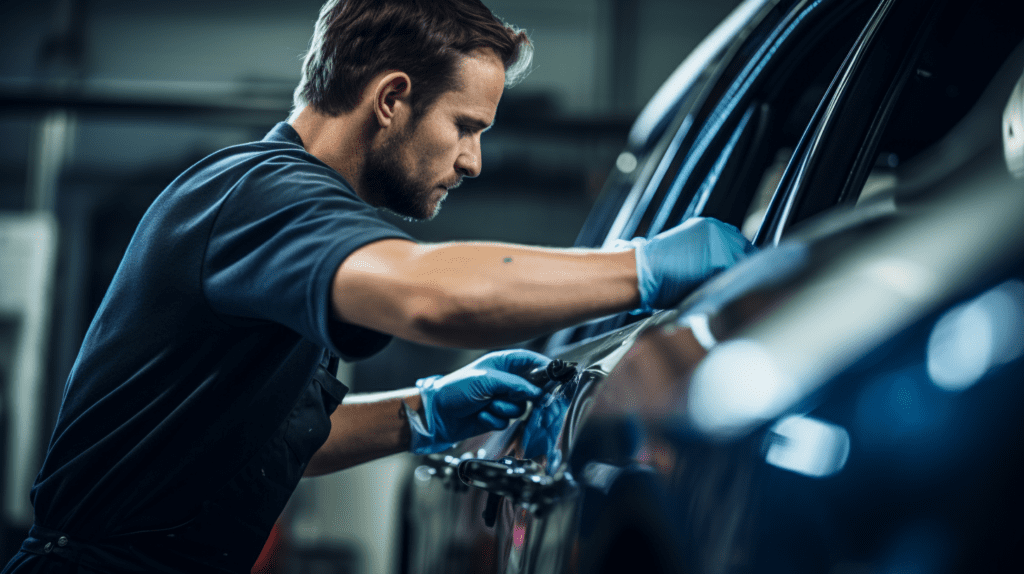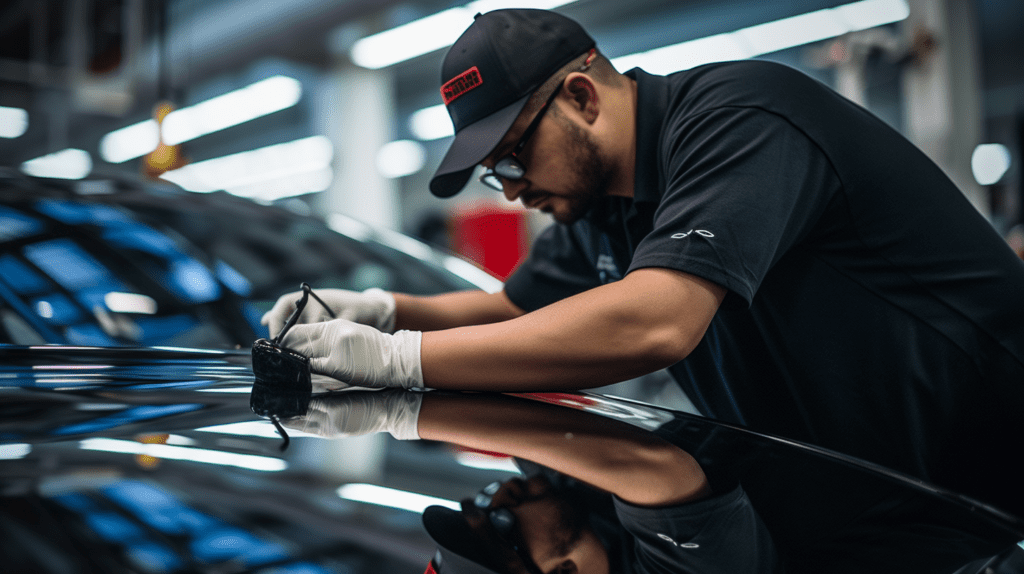Automotive Hail Damage Repair

We know what you’re thinking: “Hail damage on my car? What a hassle!” But fear not, because we’ve got your back. In this article, we’ll walk you through the world of automotive hail damage repair. From the revolutionary Paintless Dent Repair to traditional bodywork methods, we’ll cover it all. We’ll also give you tips on assessing the damage, navigating insurance claims, and even some DIY repair tricks. So buckle up and let’s get your car back to its pristine condition in no time.
Key Takeaways
- Paintless Dent Repair is highly recommended for automotive hail damage repair as it preserves the original factory finish and is quicker and more cost-effective than traditional methods.
- Traditional bodywork methods are necessary for severe hail damage but are time-consuming and labor-intensive, involving filling, sanding, and repainting the dented area.
- Regularly inspecting the vehicle for dents or paint damage is essential to assess the severity of the hail damage.
- When dealing with insurance claims, contacting the insurance company, understanding the deductible amount, and cooperating with the claims adjuster are important steps in the process.
Paintless Dent Repair

We highly recommend using paintless dent repair for automotive hail damage. Paintless dent repair, also known as PDR, is one of the most effective dent removal techniques available. This professional dent repair method involves removing dents from a vehicle’s body without the need for repainting or using fillers.
PDR relies on specialized tools and techniques to gently massage the dented metal back into its original shape. The process starts by gaining access to the backside of the dent, either through existing openings or by removing panels. Skilled technicians then use these access points to carefully manipulate the metal, gradually pushing it back into place.
There are several advantages to choosing PDR for hail damage repair. First, it preserves the original factory finish of the vehicle, eliminating the need for costly repainting. Second, it is a quicker and more cost-effective solution compared to traditional dent repair methods. Lastly, PDR maintains the structural integrity of the vehicle, ensuring that no further damage is caused during the repair process.
Traditional Bodywork Methods
Moving beyond paintless dent repair, let’s delve into the realm of traditional bodywork methods for automotive hail damage repair. While paintless dent repair is effective for minor dents and dings, traditional bodywork techniques are necessary for more severe hail damage. Here are four important considerations when it comes to traditional repair methods:
- Filling and Sanding: Traditional bodywork involves filling the dented area with a body filler material and sanding it down to create a smooth surface. This process requires skill and precision to ensure the repaired area blends seamlessly with the surrounding panels.
- Repainting: Hail damage often results in chipped or scratched paint. Traditional repair methods involve repainting the damaged area to restore the vehicle’s appearance. This requires matching the color and texture of the original paint, which can be challenging.
- Time and Cost: Traditional bodywork methods are more time-consuming and labor-intensive compared to paintless dent repair. The process involves multiple steps, such as dent removal, body filler application, sanding, and repainting. Additionally, the cost of materials and labor can be higher for traditional repairs.
- Limitations: Traditional bodywork techniques have their limitations. They may not be suitable for large or complex dents, especially those with sharp creases or stretched metal. In such cases, alternative repair methods or panel replacement may be necessary.

Hail Damage Assessment
When assessing hail damage, it is important to regularly inspect the vehicle for any signs of dents or paint damage. Hailstorms can cause significant damage to the exterior of a vehicle, and it is crucial to identify and assess the extent of the damage before proceeding with the repair process.
Professional hail damage repair technicians are trained to carefully examine the vehicle for any dents or dings caused by hailstones. They use specialized tools and techniques to determine the severity of the damage and develop a plan for repair. This assessment includes checking the vehicle’s body panels, roof, hood, trunk, and doors for any visible signs of damage.
During the assessment process, the technician will also inspect the paintwork for any cracks, chipping, or peeling that may have occurred due to the impact of the hailstones. This is essential as any paint damage can lead to further issues such as rusting if left untreated.
The assessment will not only involve a visual inspection but also may include the use of lighting and reflection techniques to highlight any damage that isn’t immediately apparent. Once the extent of the damage is understood, a repair strategy can be formulated. This may involve a combination of PDR and traditional bodywork methods, depending on the nature and severity of the dents and the condition of the paintwork.
Ultimately, a thorough hail damage assessment is crucial for planning the most effective repair process and ensuring that the vehicle is restored to its pre-damage state. It’s advisable to have this assessment performed by professionals who can identify all the areas affected and suggest the appropriate course of action to repair the vehicle effectively and maintain its value.

Insurance Claims and Coverage
Understanding the insurance claim process and types of coverage available is crucial when dealing with hail damage. Here are key points to remember:
- Contact your insurance company as soon as possible to initiate the claim process.
- Ensure your policy includes comprehensive coverage that typically covers hail damage.
- Be aware of your deductible, which is your out-of-pocket cost before insurance covers the remaining repair costs.
- Cooperate with the claims adjuster who will provide an estimate for the repairs.
DIY Hail Damage Repair Tips
Now let’s dive into some DIY hail damage repair tips that can help you address the damage on your vehicle. When it comes to hail damage, paintless dent removal (PDR) is a highly effective technique that you can try at home. PDR involves using specialized tools to carefully massage the dented area from behind, slowly pushing the dent out without the need for repainting. To begin, you’ll need a hairdryer or a heat gun to warm up the damaged area. This will make the metal more flexible and easier to work with. Next, use a plunger or suction cup to pull the dent outward. Apply even pressure and keep repeating the process until the dent is fully removed. Remember to be patient and gentle, as excessive force could cause further damage.
In terms of hail damage prevention, one of the best strategies is to park your vehicle in a covered area, such as a garage or carport, during hailstorms. If covered parking is not available, consider using car covers or thick blankets to protect your car’s surface. Additionally, investing in a hail protection system, such as a hail blanket or a hail car cover, can provide an extra layer of protection against hail damage. These systems are designed to absorb the impact of hailstones, minimizing the risk of dents and dings. By following these DIY hail damage repair tips and implementing preventive measures, you can effectively address hail damage and keep your vehicle in top condition.
Frequently Asked Questions
How long does it typically take to repair hail damage using PDR?
The time it takes to repair hail damage using Paintless Dent Repair (PDR) can vary depending on the severity and amount of damage. Typically, it can take anywhere from 24-48 hours to repair hail damage using PDR[1][5]. However, if the repair goes through an insurance claim, it may take between 5-8 days to complete the repair[8].
Will my insurance cover the cost of hail damage repairs?
As for insurance coverage, if you carry comprehensive coverage, hail damage may be covered by your car insurance policy after your deductible is paid, up to your policy’s limits[2][6][12]. However, if you only have auto liability coverage, the damage to your car is not covered[6]. It’s best to check with your insurance provider to understand the specifics of your coverage[9].
Can I repair hail damage myself if I have no prior experience?
Repairing hail damage yourself is possible, but it depends on the level of hail damage, your experience, and the tools available to you. There are dent repair kits available that can be used to repair minor dents, but these may require patience and may not always provide the best results[3][7]. For more severe damage, it’s recommended to take your vehicle to a professional repair shop[3].
Are there any long-term effects of hail damage that I should be aware of?
Long-term effects of hail damage can include paint damage, cracked glass, and mirror damage[4]. If left unrepaired, these damages can worsen over time and potentially decrease the value of your vehicle.
Is traditional bodywork the only option for repairing severe hail damage?
Lastly, traditional bodywork is not the only option for repairing severe hail damage. PDR can also be used to remove dings, dents, and even hail damage, as long as the paint is not chipped or cracked[14]. However, the choice between traditional bodywork and PDR will depend on the extent of the damage and the specific circumstances of each case.
Citations
- https://www.progressive.com/answers/does-car-insurance-cover-hail-damage/
- https://www.allstate.com/resources/car-insurance/hail-damage
- https://www.wikihow.com/Repair-Hail-Damage
- https://learnandserve.org/hail-damage-auto-guide/
- https://youtube.com/watch?v=skzbSakmL84
- https://youtube.com/watch?v=2d2zESU4-Rc
- https://www.valuepenguin.com/does-car-insurance-cover-hail-damage
- https://youtube.com/watch?v=Ncxx-h8bR1M
- https://www.challengertalk.com/threads/paintless-dent-repair.700248/
- https://www.libertymutual.com/insurance-resources/auto/hail-damage
- https://www.forbes.com/advisor/car-insurance/hail-damage/
- https://www.familyhandyman.com/article/fix-hail-damage-car/
